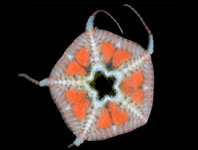Abstract
Parhydraena d’Orchymont, 1937 currently includes 19 species, 17 of which are endemic to South Africa (Perkins 2009; Bilton 2014). Most species of the genus are fully aquatic, but a few, together with members of other genera of Parhydraenini, occupy moist habitats rich in organic debris (Perkins 2009). These so-called humicolous habitats (Perkins & Balfour-Browne 1994) occur both beside water and elsewhere, and have been colonised a number of times by primarily aquatic hydraenid lineages, particularly in Africa and Australasia (e.g. Perkins & Balfour-Browne 1994; Perkins 2004a, 2004b; Perkins 2009; Hernando & Ribera 2017). Within Parhydraena the toro group (sensu Perkins 2009) comprises four (sub)humicolous species which share a broad habitus, a marked constriction between the pronotum and elytral shoulders, and short legs and maxillary palpi. Whilst phylogenetic relationships within Parhydraena remain unclear in the absence of molecular data, the toro group as currently defined may not be monophyletic, given the differences in aedeagal anatomy observed amongst its members (see Perkins 2009). The most morphologically divergent species described to date is P. toro Perkins, 2009, whose simplified aedeagal anatomy differs considerably from all other known members of the genus. P. toro appears to be narrowly endemic to the inselberg of Table Mountain and surroundings, occurring in damp litter in Afromontane forests and beside seepages and streams (Perkins 2009; DTB pers. obs.). Here I describe a new species from a cool, high-altitude gully in the western end of Hex River Mountains, which closely resembles P. toro in external and aedeagal morphology and shares its humicolous microhabitat.
References
Bilton, D.T. (2014) Two new water beetles from the Hantamsberg, an inselberg in the Northern Cape of South Africa (Coleoptera, Hydraenidae). Zootaxa, 3877 (4), 471–480.
https://doi.org/10.11646/zootaxa.3887.4.5Hernando, C. & Ribera, I. (2017) Two new terrestrial species of Hydraena Kugelann from the island of Bioko, Gulf of Guinea (Coleoptera: Hydraenidae). Zootaxa, 4238 (2), 281–286.
https://doi.org/10.11646/zootaxa.4238.2.10Perkins, P.D. (2004a) A revision of the South African endemic humicolous beetle genus Nucleotops Perkins and Balfour-Browne (Coleoptera : Hydraenidae). Zootaxa, 559, 1–12.
Perkins, P.D. (2004b) A revision of the Western Australian endemic humicolous beetle genus Tympallopatrum Perkins (Coleoptera : Hydraenidae). Zootaxa, 672, 1–16.
Perkins, P.D. (2009) Revisions of the genera Parhydraena Orchymont, Protozantaena Perkins, Decarthrocerus Orchymont, and Parhydraenopsis nomen novum, aquatic and humicolous beetles from Africa and Madagascar, and comparative morphology of the tribe Parhydraenini (Coleoptera: Hydraenidae). Zootaxa, 2038, 1–119.
Perkins, P.D. & Balfour-Browne, J. (1994) A contribution to the taxonomy of aquatic and humicolous beetles of the family Hydraenidae in southern Africa. Fieldiana Zoology, 77, 1–159.
Riedel, A. (2005) Digital imaging of beetles (Coleoptera), and other three-dimensional insects. In: Häuser, C., Steiner, A., Holstein, J. & Scoble, M.J. (Eds.), Digital Imaging of Biological Type Specimens. A Manual of Best Practice. Results from a study of the European Network for Biodiversity Information, Stuttgart, pp. 222–250.

